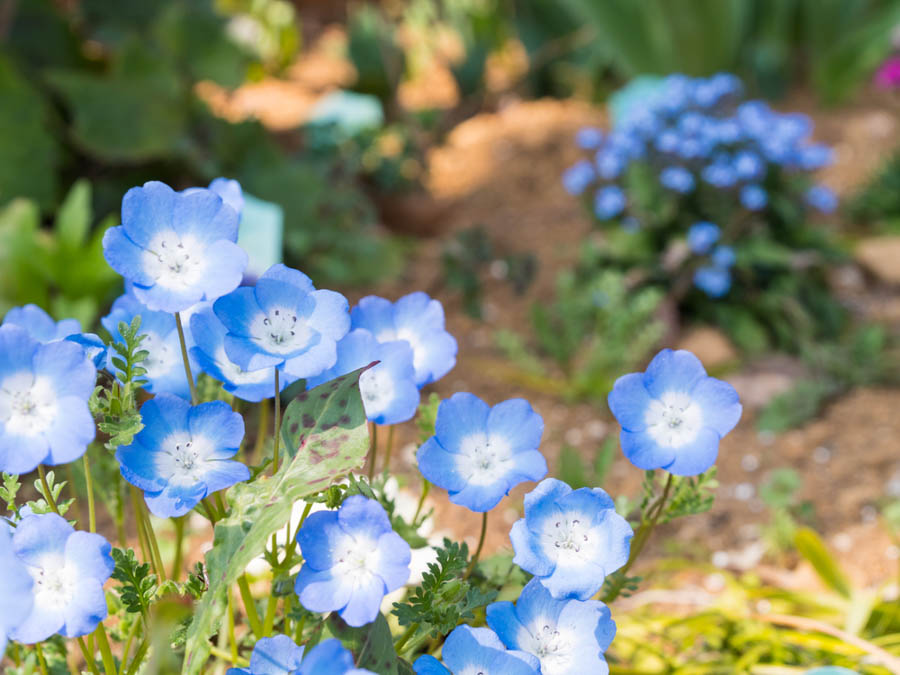Baby Blue Eyes: The Versatile California Wildflower

Baby Blue Eyes, Nemophila menziesii, are among the most versatile of California native wildflowers. They are often found as one part of a wildflower collection, but they can also be used effectively in a more formal garden setting, such as in a border or cascading over the edge of a container or wall. And Baby Blue Eyes make an excellent cover for spring bulbs. As their name states, Baby Blue Eyes are blue: true blue flowers with a white center.
Timing. Plant Baby Blue Eyes in late fall and blooms may appear as early as February and continue into May or June.
Soil. Baby Blue Eyes tolerate a wide variety of soil types and tolerate a soil pH from 6.0 to 8.0. Regardless of soil type, the soil must be well draining.
Microclimate. Baby Blue Eyes grow in full sun or partial shade. Seeds typically germinate in late winter or early spring when temperatures reach 68oF and 72oF.
How to Plant. From seed. To broadcast seed outdoors over a wide area, choose a weed free location and water the area thoroughly. To ensure an even seed distribution, consider mixing a small amount of sand with the seed. Broadcast seeds over the area, spread a very, very light layer of soil over the top and water gently. Mist daily to keep soil moist until seeds emerge and plants establish.
To grow Baby Blue Eyes in a more formal garden setting, such as in a border or container, loosen the soil with your fingers and place seeds in individual shallow depressions approximately 4 to 8 inches apart. Then cover the seeds with a very, very light layer of soil and water gently. Mist daily to keep soil moist until seeds emerge and plants establish.
Watering. California wildflowers are typically drought tolerant, but as annuals their seeds need fall and winter rains to germinate. In years with average rainfall, fall and winter rains may provide adequate water during the growing season; in years of drought, plants will need water once every 7 days if in full sun or once every 10 days if in partial shade. To prolong bloom, water Baby Blue Eyes throughout the spring once every 7 days if in full sun or once every 10 days if in partial shade. Plants in full sun will need more water than plants in partial shade. Avoid overwatering.
Don’t know your California climate zone? Click here.
Other articles of interest:
Getting Started With California Poppy
Tips for Using California Poppy in a Sustainable Garden
Sky Lupine: A Lovely California Native Wildflower
California Goldfields: Plant in Fall for a Burst of Golden Spring Color
